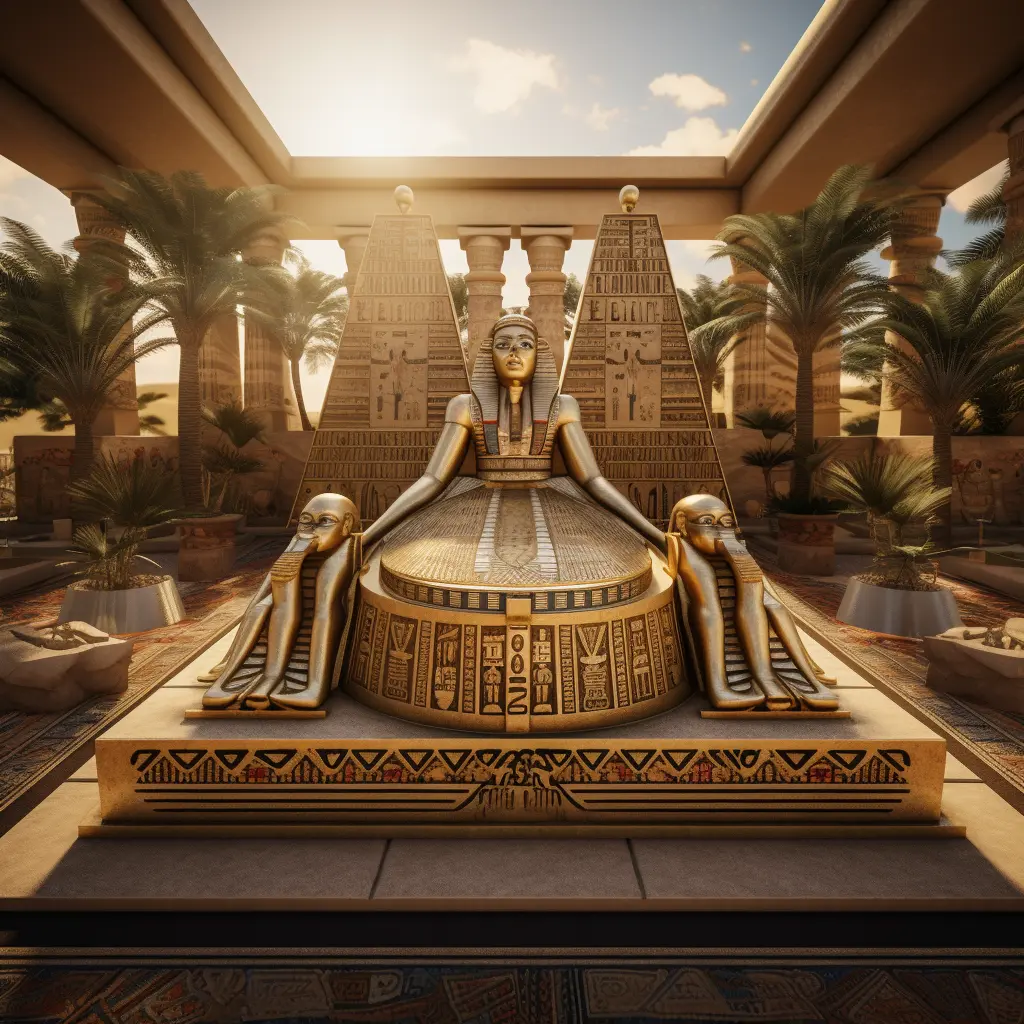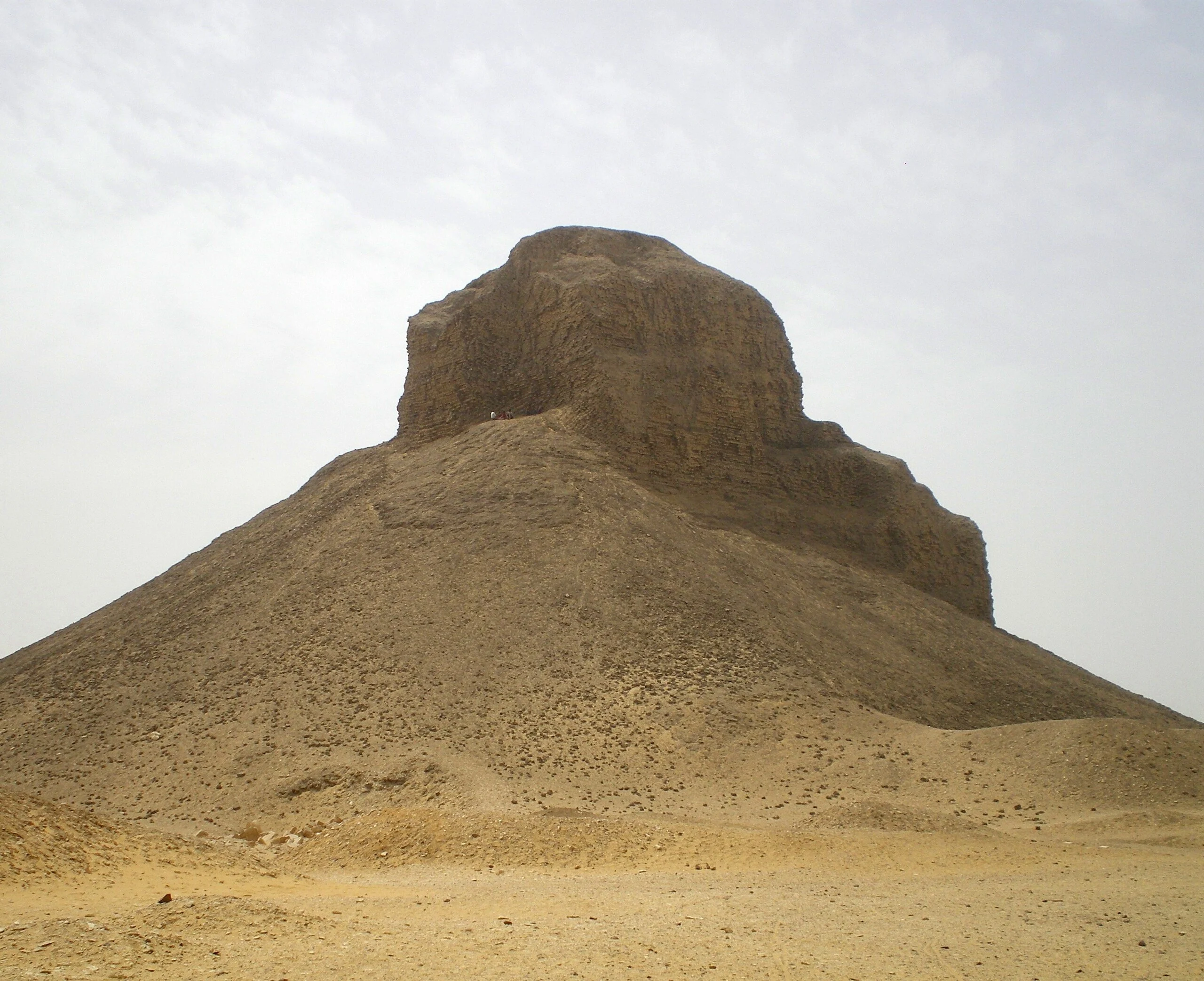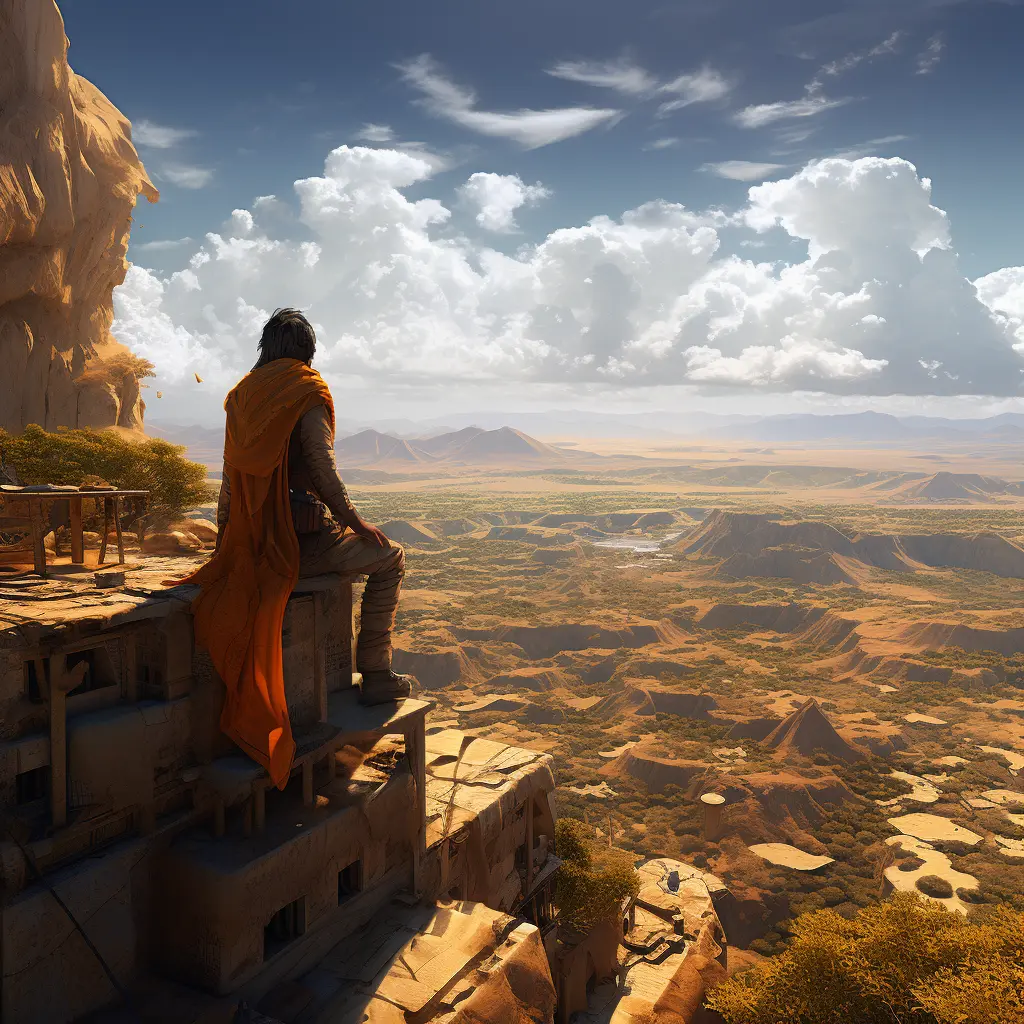
The Nile River, an enduring symbol of Egypt’s ancient glory, courses through history like a vein of life. Its waters, a ribbon of sapphire snaking through the sun-baked sands, shaped the very foundation of one of the world’s oldest and most enigmatic civilizations. Ancient Egypt, a testament to human achievement, owed its existence to this majestic waterway, which blessed the land with fertility, prosperity, and a sense of divine connection.
From the life-giving floods that enriched the soil to the emergence of a complex society along its banks, the Nile was not merely a river—it was the lifeblood of Egypt. It was on these fertile banks that the story of the Pharaohs was written, pyramids rose to touch the heavens, and gods walked among men. The Nile set the stage for a cradle of civilization that continues to captivate the world, echoing tales of power, innovation, and spirituality.
As we embark on this journey to unravel “How Did The Nile Shape Ancient Egypt?” we invite you to immerse yourself in the legacy of this timeless river. Here, we explore the profound ways the Nile’s ebb and flow dictated the rhythms of ancient Egyptian life, underpinning the enduring saga of a civilization that remains etched in stone and story across the millennia.
The Lifeline of the Nile
In the tapestry of ancient civilizations, none have been so profoundly influenced by a natural phenomenon as Egypt by the Nile. This river, stretching over 4,000 miles, was the geographical spine of Egypt, an enduring symbol of life amidst the surrounding desert. The Nile’s predictable flooding pattern, its annual life-affirming inundation, was the rhythmic heartbeat of agricultural cycles, upon which the entire society was dependent.
The annual floods, brought on by the summer rains from the Ethiopian highlands, were a spectacle of nature that the Egyptians awaited with bated breath. When the river swelled, it spilled over its banks, diffusing mineral-rich silt across the land. This black earth, known as ‘Kemet’ to the ancients, was the secret to Egypt’s agricultural wealth. As the floodwaters receded, a verdant stretch of fertile soil was revealed, ready for the planting season. It was this miraculous event that underpinned the agricultural calendar, transforming arid land into the breadbasket that sustained the ancient civilization.
This seasonal bounty allowed the Egyptians to grow an abundance of crops such as wheat, barley, and flax, which were not just the sustenance of the people but also the commodities that powered the economy. The surplus of food enabled the population to burgeon and complex societal structures to develop. More so, the Nile’s waters fostered a sense of continuity and predictability that few other ancient societies enjoyed.
Aside from its agricultural significance, the Nile was the main water source for drinking, bathing, and domestic chores. Its banks were lined with settlements that thrived on the trade and transportation it facilitated. The river also teemed with fish and attracted flocks of birds, both of which supplemented the Egyptian diet.
The Nile was thus not just a river in Egypt—it was Egypt itself. Its ebb and flow dictated the pace of life, the structure of society, and the very survival of the civilization it cradled. The lifeline of the Nile was a testament to how geography can shape destiny, a continuous source of sustenance and survival for ancient Egypt, and the undercurrent of its historical saga.
Economic Impact of the Nile
The Nile was not just a source of sustenance for Ancient Egypt; it was the throbbing artery of its economy. The river’s pervasive influence facilitated trade and commerce, turning Egypt into a bustling hub of ancient entrepreneurial activity. Boats laden with grain, gold, and goods traversed the Nile, connecting various towns and forming the commercial lifelines that extended beyond the immediate geography into Africa, the Middle East, and the Mediterranean.
Agriculture, the cornerstone of Egypt’s economy, thrived on the Nile’s benevolence. The floods’ predictability allowed for the development of advanced agricultural practices and the cultivation of surplus produce, which became the primary export, fueling trade and generating wealth. The excess not only fed the populace but also filled the granaries that sustained Egypt through less bountiful times. It was this agricultural surplus that financed monumental construction, supported a complex bureaucracy, and maintained a powerful standing army.
Related: Journey Through History: Egypt’s 10 Most Famous Pharaohs
The Nile’s contribution to Egypt’s wealth was significant. The taxation of agricultural produce, the cornerstone of the Egyptian economy, was made possible by the consistent output the Nile’s fertile plains provided. The river was the economic engine that drove the accumulation of wealth, which in turn funded the opulent lifestyles of the pharaohs and the religious endeavors that produced temples and monuments, many of which stand to this day.
In essence, the Nile’s role in Egypt’s economic prosperity was pivotal. It nurtured a system where wealth was intrinsically linked to the river’s natural cycles. The Nile’s waters, flowing like liquid gold, entrenched Egypt’s status as one of history’s most affluent civilizations, with an economy that was the envy of the ancient world.
Sociocultural Development Along the Nile
The Nile River’s influence on Egyptian society was profound, shaping not only the physical landscape but also the cultural and spiritual realms of daily life. Egyptian civilization was synchronized with the rhythm of the Nile, and this harmony was reflected in their societal structure, religion, and monumental architecture.
The omnipresence of the Nile fostered a unique societal organization. Villages and cities emerged along its banks, maximizing access to its waters. Society was arranged around the agricultural calendar, with the inundation, growing, and harvest seasons dictating the flow of life. The river served as the main thoroughfare for communication and transport, integrating the culture and fostering a sense of unity among the disparate regions of the Nile valley.
Religiously, the Nile was central to the Egyptian understanding of the cosmos. It was personified by Hapi, the god of the annual floods, who was revered as the giver of life. Hapi’s domain was considered sacred, and the rituals associated with the inundation were vital to the Egyptian religious calendar. Temples were often constructed on the river’s edge, aligning the spiritual with the everyday, and priests orchestrated ceremonies to honor the river’s life-giving bounty.
Moreover, the Nile was indispensable to the architectural prowess that ancient Egypt is renowned for. The river provided the means to transport the colossal stone blocks used in pyramid construction from distant quarries to construction sites. Waterborne transport was more efficient and less labor-intensive compared to overland routes. The river’s predictable flooding also allowed for advanced planning in building projects, contributing to the precision and grandeur of Egyptian monuments.
Thus, the Nile was the thread that wove together the fabric of Egyptian society. It was a source of inspiration, a deity to be appeased, and a tool that enabled architectural feats that continue to awe humanity. The river’s ebb and flow dictated the rhythm of Egyptian life, deeply integrating into the sociocultural development of the civilization it sustained.
Political and Military Influence of the Nile
The Nile was not only the lifeblood of Ancient Egypt’s society and economy but also a strategic asset in its political and military endeavors. The river provided a natural defense boundary against invaders, with its vast and unpredictable delta creating a formidable barrier to foreign armies. This natural moat safeguarded the heartland of Egypt, contributing to the stability and longevity of its civilization.
Politically, the Nile was a unifying force, its waters a binding agent for the Upper and Lower kingdoms of Egypt, and it played a key role in the nation’s mythos and royal iconography. The Pharaohs, seen as earthly deities, were thought to have control over the Nile’s floods, reinforcing their divine right to rule.
In military terms, the Nile was the superhighway that facilitated the mobilization of troops and the transport of war machinery. Egypt’s naval prowess grew from its intimate knowledge of the river, with ships designed to navigate its currents and winds. These vessels were not only used in combat but also in displaying the might of the pharaohs, projecting power, and extending Egyptian influence into neighboring regions.
The strategic significance of the Nile in the political and military arena was clear: it was a source of power, a protector, and a path to expansion. The river enabled the Egyptians to forge an empire, defend it against adversaries, and assert dominance throughout the Nile Valley and beyond.
The Nile in Mythology and Cultural Identity
The Nile, with its enigmatic and life-giving properties, became the wellspring of rich mythology and a core component of Egypt’s cultural identity. The river was central to creation myths, where the waters represented the chaotic primordial element from which life emerged, as exemplified by the god Nun. Such myths underscored the Nile as the source of all existence, reinforcing its divine status among the Egyptian people.
Artistically, the Nile was depicted in countless hieroglyphs, temple reliefs, and papyri, often associated with gods and goddesses that exemplified fertility, abundance, and renewal. Literary works celebrated the river’s bounty, and the language itself was suffused with references to the Nile, illustrating its integral role in the everyday life of the Egyptians. The river’s enduring legacy in Egypt’s collective consciousness bridged the tangible and the mystical, confirming its place as a perpetual symbol of the civilization’s resilience and creativity.
Environmental and Agricultural Advancements
The Nile’s predictable flooding patterns spurred Ancient Egypt to develop sophisticated agricultural techniques, allowing them to harness the river’s potential to the fullest. Innovations such as basin irrigation were pivotal. This technique involved constructing embankments to trap floodwaters, which would then be released gradually to irrigate fields, ensuring crops could thrive even in drier seasons.
Furthermore, the Egyptians perfected the shaduf, a hand-operated device for lifting water to higher grounds, which was revolutionary in expanding arable land beyond the immediate floodplain. Additionally, they introduced advanced plowing methods, using oxen-drawn plows that could till the rich, alluvial soil left by the receding waters, maximizing the yield from the fertile black land, or “Kemet,” as it was known.
Management of the Nile’s resources was a testament to the Egyptians’ deep understanding of their environment. They practiced crop rotation to maintain soil fertility and had officials specifically appointed to monitor the flood levels and allocate resources accordingly, ensuring a sustainable balance between land use and the river’s natural dynamics. These agricultural and environmental strategies displayed a harmony between human ingenuity and the rhythms of the natural world, enabling Ancient Egypt to flourish for millennia.
Conclusion
The Nile River was the cornerstone upon which Ancient Egypt built its unparalleled civilization. It shaped their world in every conceivable way—from agriculture to economics, societal norms to religious beliefs, and political might to cultural identity. The legacy of the Nile’s influence is embedded in the very fabric of Egyptian history, providing a testament to human ingenuity in symbiosis with nature’s forces. Understanding the Nile’s integral role is crucial to appreciating how it nurtured and drove the success of Ancient Egypt, making it one of history’s most enduring and fascinating civilizations.



